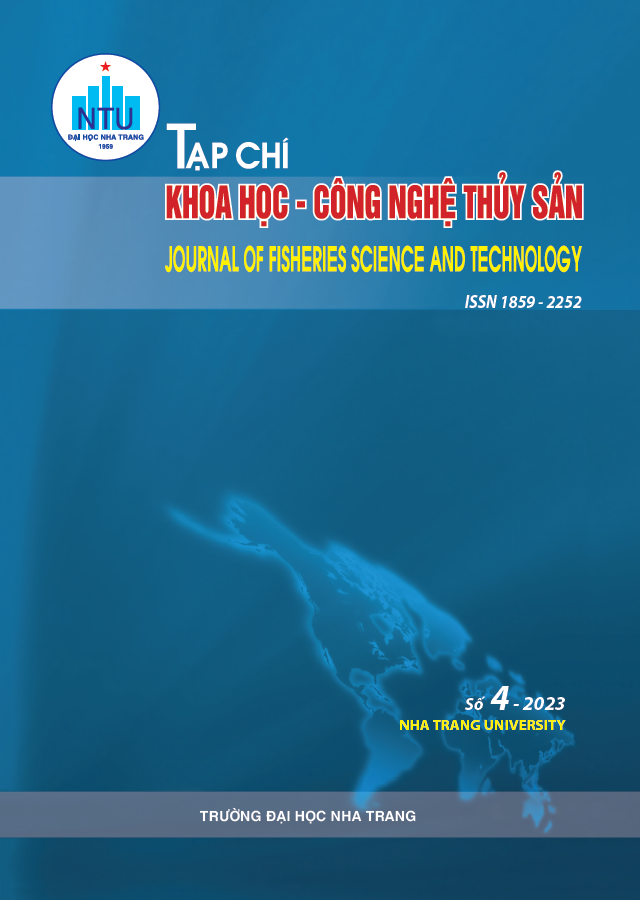##plugins.themes.huaf_theme.article.main##
Abstract
HCG was injected two times for female (300 UI.kg-1 female in the first time and 500 UI.kg-1 female in the second time) and injected just one time for male at a dose of 400 UI.kg-1 male. Three fertilizing methods were used in this study: dry fertilizing (sperm + egg), wet fertilizing (sperm + water + egg) and natural method (natural breeding). Result showed that fertilized egg rate was obtained a highest value from the wet fertilizing method (91.81%), followed from dry fertilizing method (88.44%) and the lowest value obtained from the natural breeding method (75.92%). There was no significant difference in fertilized egg rate between dry and wet fertilizing method (P>0.05), however there were significantly higher than value obtained from natural fertilization (P<0.05). Result also showed that there was no significant difference between three methods in hatched egg rate (P>0.05). Wet fertilizing method was applied for incubated egg density study. Three incubated egg densities were applied at 1,000 egg.L-1, 1,500 egg.L-1, and 2,000 egg.L-1. Results demonstrated that embryonic development time of the pink ear emperor was ranged from 14,10 hours to 14.50 hours and then hatched into fry. There was no significant difference between three densities in embryonic development time (P>0.05). Hatched egg rate was highest value at density of 1,000 egg. L-1 (90.33%), followed from density of 1,500 egg.L-1 and no significant difference between these two densities (P>0.05), however there were significantly higher than value obtained from incubated egg density of 2,000 egg.L-1 (87.84%; P<0.05). The same trend as hatched egg rate, survival rate of five days old was obtained highest value at density of 1,000 egg.L-1 (48.51%), followed from density of 1,500 egg.L-1 (48.14%), and there was no significant difference between two these densities (P>0.05). The lowest value was obtained from incubated egg density of 2,000 egg.L-1 (46.14%) and was significantly higher than those obtained from the above treatments (P<0.05). Deformed shape rates were ranged from 3.23 – 3.72%, and no significant difference between two incubated egg densities at 1,000 egg.L-1 and 1,500 egg.L-1 (P>0.05). Wet fertilizing method and incubated egg density of 1,500 egg.L-1 should be considered as an effective application for artificial breeding technique of pink ear emperor, Lethrinus lentjan (Lacepede, 1802).
Key words: Pink ear emperor (Lethrinus lentjan), fertilizing method, incubated egg density

